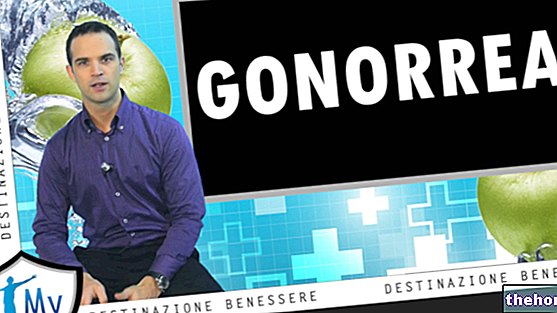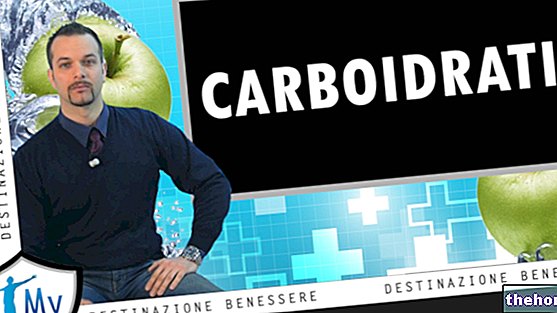In the previous episode we started talking about osteoarthritis. We have seen how this disease is characterized by degenerative lesions affecting the cartilage, which covers and protects the bone ends involved in the joints. We have also seen how this process is not limited to cartilage alone, but tends to gradually involve the entire joint over time. The result is a localized pain and a limitation of movements that get worse over the years. Today, let's take a closer look at what happens when osteoarthritis affects the vertebrae of the neck.
In cervical arthrosis, wear and erosions typically affect both the articular surfaces of the vertebrae and the cartilage discs interposed between one vertebra and the other. In practice, these structures slowly deteriorate, leading to pain and other problems, including neck stiffness, nausea, headaches and limited mobility. The cervical tract is in fact the most mobile part of the vertebral column, which guarantees the correct movements of the neck and head. The cartilage and joint damage typical of osteoarthritis is at least in part a physiological consequence of aging. However, as regards cervical osteoarthritis specifically, the age factor is not so decisive, since the arthrosic process often affects even young subjects. It would therefore be correct to consider it more a consequence of a wrong lifestyle than an "inevitable effect of" aging. Cervical arthrosis is a chronic and progressive disease; therefore it tends to get worse over time. If it is not addressed and treated properly, it can also involve the nervous and vascular structures protected by the cervical spine itself, with all the negative consequences of the case. For example, annoying pains and tingling pains may arise that extend from the neck to the arms and hands; in the worst case, there are also serious difficulties in making certain movements.
The causes of cervical arthrosis can be the most varied. Often, at the origin there are postural defects that cause abnormal compressions on the joints of the cervical spine; therefore people who remain standing or sitting in front of a desk for many hours are at risk. , perhaps due to heavy work or sports activities such as weight lifting. Cervical arthrosis can also depend on trauma, as can occur in some contact sports or in the case of the so-called "whiplash", a typical consequence of accidents with the dynamics of the tamponade Risk factors are also deviations of the spine, such as scoliosis or kyphosis, and other pathologies, such as rheumatoid arthritis.
Among the symptoms of cervical arthrosis, the best known are the pain felt in the nape and neck, the sensation of stiffness and the difficulty in making even trivial movements, such as turning or bending the head. A signal that should not be underestimated is the perception of noises, similar to a "snap", which are heard when you turn your neck or lower your head; moreover, these noises are often associated with the sensation of internal friction, as if there is a "sand" between the vertebrae. This noise is basically due to the development of bony protrusions on the vertebrae called osteophytes. Other symptoms that can occur with cervical osteoarthritis are: headache, dizziness, visual disturbances, noise intolerance, nausea and dizziness when changing position. Cervical osteoarthritis tends to worsen over time and can cause severe widespread pain. In addition to the neck, there may be a painful involvement that radiates from the shoulders to the fingers of the hand, with perception of tingling or small jolts. In this case we speak more precisely of cervicobrachialgia, which are sometimes associated with sensory disturbances, such as numbness, tingling, loss of sensitivity and decrease in muscle strength of the arm and hand. These disorders are due to compression of the roots of the cervical nerves, especially due to the formation of osteophytes or a herniated disc. Their presence, in fact, can cause a decrease in the diameter of the vertebral foramina. This predisposes to possible inflammation or compression not only of the spinal nerves, such as already mentioned, but also of the vascular structures of the cervical tract. Obviously, in the most serious cases, all this can be very debilitating. Let's see together some examples. If the compression affects the blood vessels that pass through the vertebrae of the neck and feed the brain, dizziness and unexplained sleepiness may occur. In very rare cases, excessive compression of the cervical spinal cord ale can cause lower back and leg problems, such as pain in the lower back and lower limbs, movement disorders and even loss of bladder control. It is interesting to note, however, that in some patients the symptoms of cervical arthrosis may be minimal or even absent, although the presence of the typical lesions of osteoarthritis is clearly visible from the radiological examination.
In the presence of the typical symptoms of cervical arthrosis, it is advisable to undergo an orthopedic examination first; more in-depth examinations will be possible using imaging techniques, such as x-rays, CT scans and magnetic resonance. Often, x-rays are sufficient to document the presence of cervical arthrosis. standard, while any soft tissue problems, such as hernias and nerve root compressions, are only well highlighted by magnetic resonance imaging. In addition, a visit to evaluate any neurological problems or electromyography may be useful. Electromyography, in particular, may be useful. it is considered for those patients who continue to complain of persistent pain despite the fact that no significant alterations emerge from the radiographic images.
Unfortunately, in the current state of medical science, cervical arthrosis cannot be cured. Cartilage and joint degeneration is in fact progressive, and can only be slowed down; in addition, there are very effective drugs to relieve symptoms. Medicines such as painkillers, anti-inflammatories and, sometimes, muscle relaxants, which are useful in the acute phase, but which should not be abused because in the long run they produce not indifferent side effects. During painful crises, the neck must be kept at rest, perhaps temporarily using an orthopedic collar. The function of this device is to support the neck in order to relieve pressure on the cervical nerves and blood vessels, and prevent too sudden movements. In the periods between one crisis and another, massages and physical rehabilitation therapies can be very useful. In severe cases, however, it may be necessary to resort to surgery, especially in the presence of severe compression of the nerve or spinal cord.
At a preventive level, the first useful measure is to change bad habits which in many cases are themselves the cause of cervical arthrosis. For example, if you are forced to stand or sit for a long time, it is important to maintain a correct position so as not to strain the cervical area. In addition, gymnastic and stretching exercises specifically for the neck are recommended. For example, forward and backward movements, left and right, and slow sideways rotations can be performed for a few minutes, every day. During the acute phase of osteoarthritis, however, I remind you that it is better to avoid putting too much strain on the cervical tract.




























